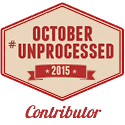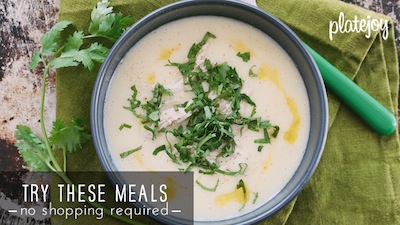To have the best low sodium dining experience, two things are of utmost importance:
1. Be clear as to what you cannot eat
2. But more importantly, be informed as possible on what you can
I’ve spoken before about the basic tips that make dining out a breeze:
- call ahead of time
- bring a list of your restrictions
- frequent favorite spots regularly to build a relationship with the staff and chefs. The more they cook for you, the more adventurous (and comfortable) they will become in making sodium free meals
But let’s get a little more detailed on how your ordering tactics can greatly influence the quality of the food you end up eating.
On a recent trip to Green’s Restaurant, my knowledge of cooking techniques and local food products enabled me to order a generous pasta dinner when it seemed that my dining fate lied solely in leafy, green salads.
Some might think that a vegetarian restaurant would be an ideal place for someone on a sodium restricted diet as we (vegetarians and people like myself) share a common denominator of culinary parameters. But the truth is that, as with most restaurants vegetarian or carnivorous, the vegetables and starches are boiled in salted water earlier in the day. And if you, the restricted diner, forget to call ahead and ask for an eggplant or couscous to be left aside, you will be left with only the raw ingredients.
This particular scenario occurred to me one lovely Saturday evening in October. Our waitress, who was studying for her nursing degree, understood my dietary needs on a personal and academic level. She was truly invested in accommodating my needs, but due to the blanching issue, choices were sparse. After combining forces with the chef, they came up with two lovely, fall salad options – one with figs and endive and the other with tomatoes and arugula.
Usually, I would have been more than satisfied with those choices. I tend to not make too much of a fuss when dining out, especially whenI forget to make a warning call earlier in the day. But that night, I was hungry and I wanted something substantial.
I saw on the list a pappardelle pasta dish, which as you may guess from my previous post, is one of my favorite pastas. The thick noodles can make even a simply diced tomato garnish a satisfying masterpiece. As we placed out orders, I was driven to push beyond the boundaries of my salad options. I asked the waitress if the pasta was made fresh by the kitchen or purchased. She said purchased and again, I pushed on. I asked if she knew which company made the pasta and she replied, the Pasta Shop.
A few months earlier I had met a woman from the Pasta Shop at the Ferry Building Farmer’s Market and I discovered that they had sheets of unsalted spinach dough – perfect for making sodium free ravioli. I also discovered that all of their pasta products without stuffing (now sold in Whole Foods as well) are all sodium free.
Armed with this knowledge, I told the waitress that I could have that pasta and if it was boiled in salt free water and coated with olive oil, garlic, and whatever fresh veggies they had, then I would be one happy Sodium Girl with one hearty sodium free meal. The kitchen did just that and the waitress was impressed by my depth of sodium free food knowledge (no big deal) and delighted to give me a dish that rivaled my fellow compatriots’ plates.
It was an amazing moment of freedom in a limiting circumstance. It demonstrated that, while knowing your restrictions keep your meals sodium safe, knowing your edible options give you a range of choices when there seem to be none. Like the PSA ads with the shooting star always says, “the more you know”…the more you can eat.
Chow on.








I live on 350 dollars a month for food. Fresh food cost more then frozen can you help me.
Hi JD – I knew that taking on a low sodium diet would mean cooking food from scratch a lot, which I thought would mean a higher grocery bill. But there are definitely ways to keep in your budget and stay healthy. First, frozen food veggies and fruit are great – just check the back of the bag for sodium content as it can vary. In terms of fresh produce, try to stick with what is in season – those items will be cheaper. The Center for Urban Education on Sustainable Agriculture (CUESA) has a great seasonal chart. Also, just keep your eye out for price – root vegetables may cost less than celery and potatoes and can make a good substitute. If you have a question on how to cook something let me know or use epicurious.com to find a recipe. You can also find great deals at farmer’s markets – like two bundles of kale for $2 – you just have to keep your eyes open and find the right vendor. And finally, to really cut costs, you can grow your own herbs and veggies (or see if there is a community garden you can join in your neighborhood) and even make your own bread and pasta (it’s just dough and water!). While some of these suggestions will definitely cost you in time, they will greatly reduce the amount of money you spend. Let me know if this helps!